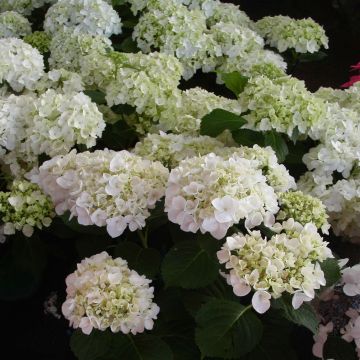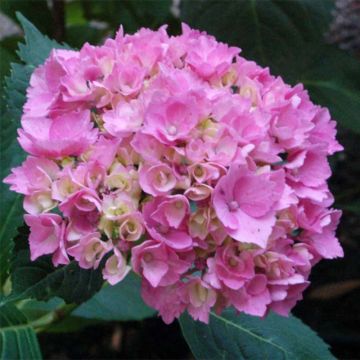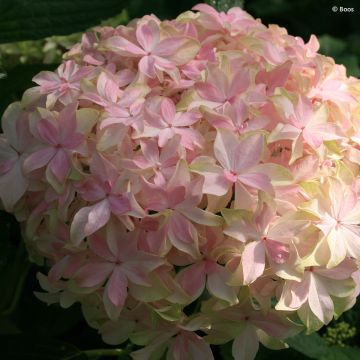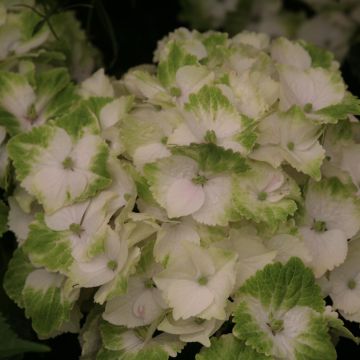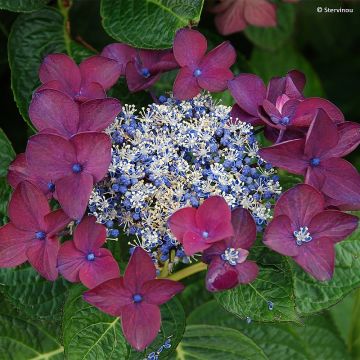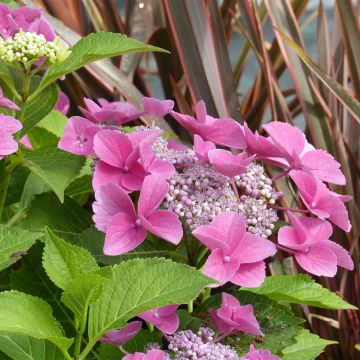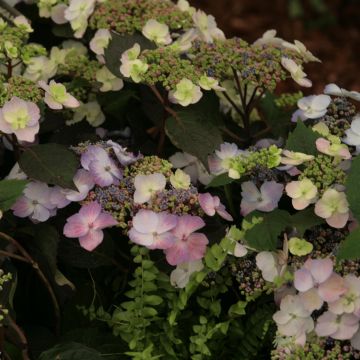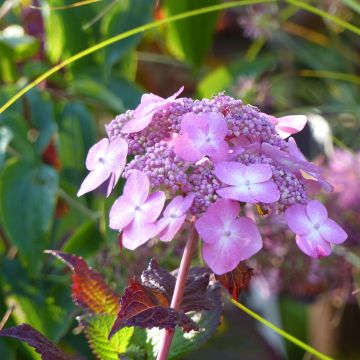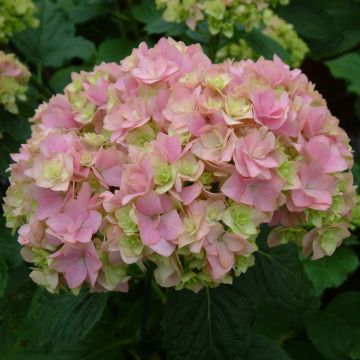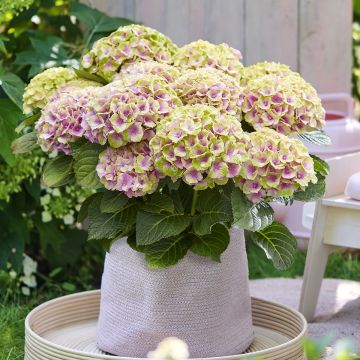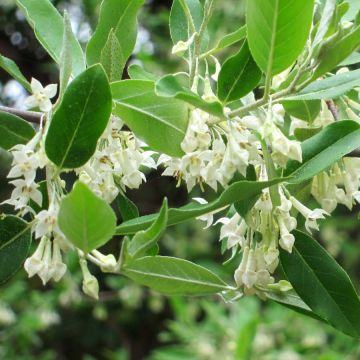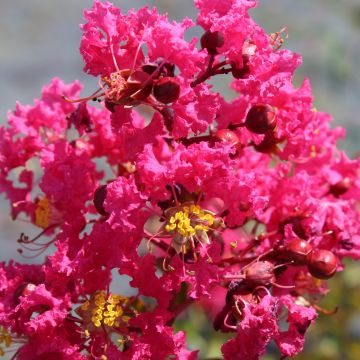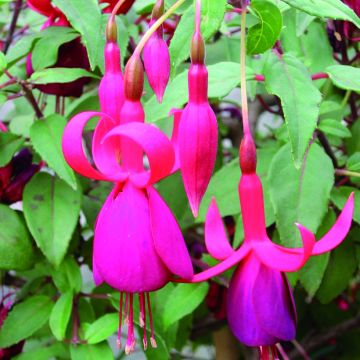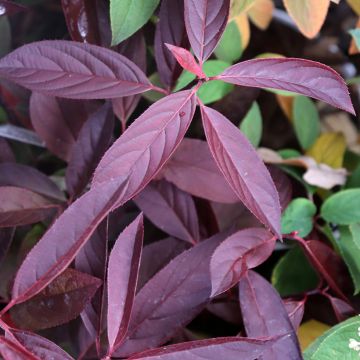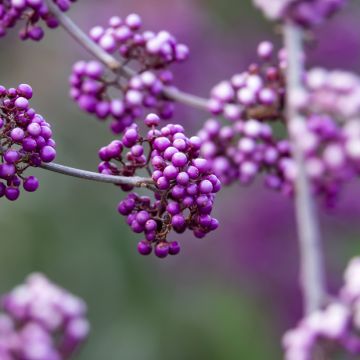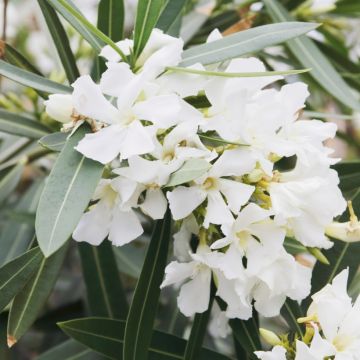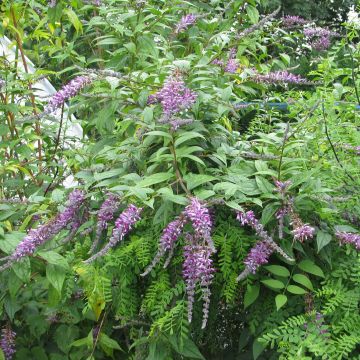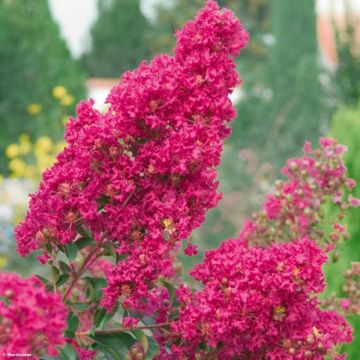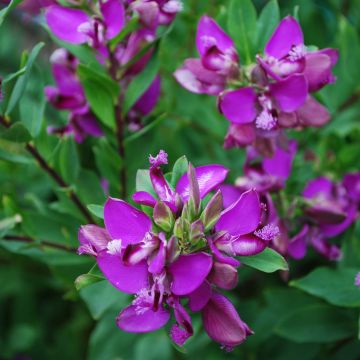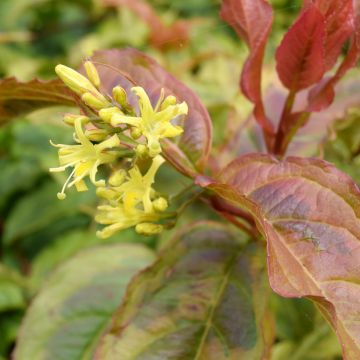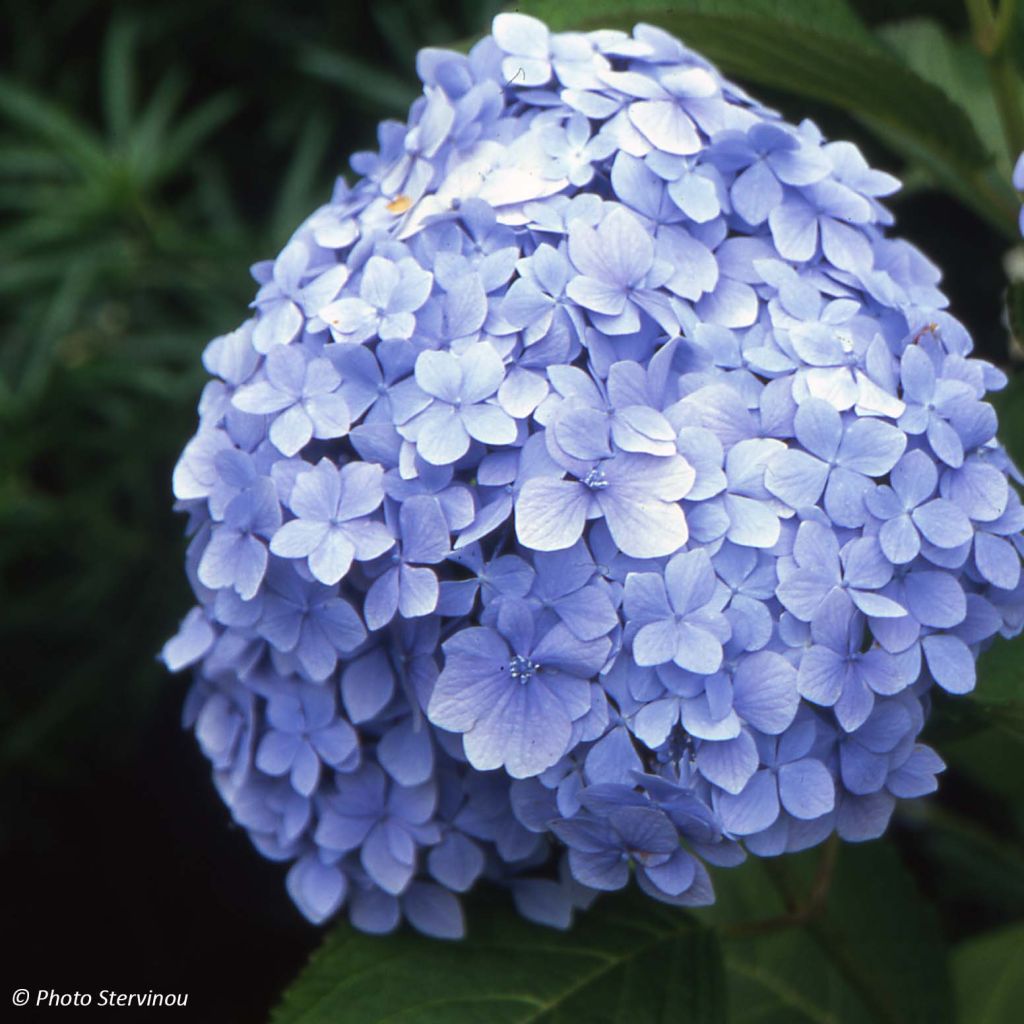

Hydrangea macrophylla Mousseline
Hydrangea macrophylla Mousseline
Hydrangea macrophylla Mousseline
Bigleaf Hydrangea, French Hydrangea
This item cannot be shipped to the selected country
Delivery charge from €5.90
More information
Schedule delivery date,
and select date in basket
This plant carries a 24 months recovery warranty
More information
We guarantee the quality of our plants for a full growing cycle, and will replace at our expense any plant that fails to recover under normal climatic and planting conditions.
From €5.90 for pickup delivery and €6.90 for home delivery
Express home delivery from €8.90.
Does this plant fit my garden?
Set up your Plantfit profile →
Description
The Hydrangea macrophylla 'Mousseline' is a wonderful hydrangea dating back to 1900, a robust, reliable and generous variety that our grandmothers appreciated. With excellent floribundity, it repeat flowers late in the season, offering beautiful ball-shaped flower heads that will take on a pale pink to baby blue colour, depending on the soil. They open on a vigorous bush with a rounded habit adorned with light green foliage. This variety will thrive in a partially shaded and cool exposure, in a non-limestone soil, conditions that will reveal its beauty without artifice.
The Hydrangea macrophylla 'Mousseline' is an excellent French creation that we owe to Emile Lemoine. It comes from the species H. macrophylla, a very hardy plant belonging to the Hydrangea family, native to China and Japan. 'Mousseline' has a rounded, regular habit and vigorous growth. It reaches about 1.50 m (4 ft 11 in) in all directions at maturity, but in certain conditions it can grow up to 1.80 m (5 ft 11 in) in height. Its enormous flower heads appear at the end of June and exceed 20 cm (7.9 in) in diameter. This flowering continues in late summer, on a cushion of already faded summer flowers. Each flower head is composed of small fertile and sterile flowers with striking dimorphism. The larger sterile florets are light blue if the soil is acidic (pH between 5.5 and 6.5), but they will be pale pink if the plant grows in neutral soil (pH=7). Their colour evolves over time to light green, before fading to light brown. The flowering spreads over a very healthy-looking foliage, light green in colour, rather matte. The leaves are opposite, reaching a minimum length of about twenty centimetres. They are simple, oval to elliptical, ending in a pointed tip, coarsely toothed like a saw. Hydrangeas can live for at least 50 years.
The 'Mousseline' Hydrangea is a charming, generous and sturdy plant, excellent for partial shade. Hydrangeas, beloved by gardeners, are well known for brightening the north side of houses. This one will thrive in an east-facing exposure, protected from the burning rays of the summer sun and the setting sun, in shrub beds as well as hedges. This variety will bring a lot of charm to the partially shaded areas of the garden, to a somewhat hidden entrance, to the corner of a porch. Even though these plants fear limestone, hydrangeas are not strictly ericaceous plants, they like fertile and clay soils. Pair them with Magellan fuchsias, annual impatiens, or plant spring-flowering bulbs in front of their round silhouette. Enjoy their sumptuous flowering in the garden or in the house, and create romantic bouquets with their beautiful flowers.
Note: The colour of hydrangea macrophylla flowers varies depending on the soil pH. Traditionally blue varieties turn pink in neutral or alkaline soil. To maintain a beautiful blue colour, mix ericaceous soil or sphagnum moss with your garden soil and add aluminium sulphate (slate contains it) or alum stone every spring.
Report an error about the product description
Hydrangea macrophylla Mousseline in pictures
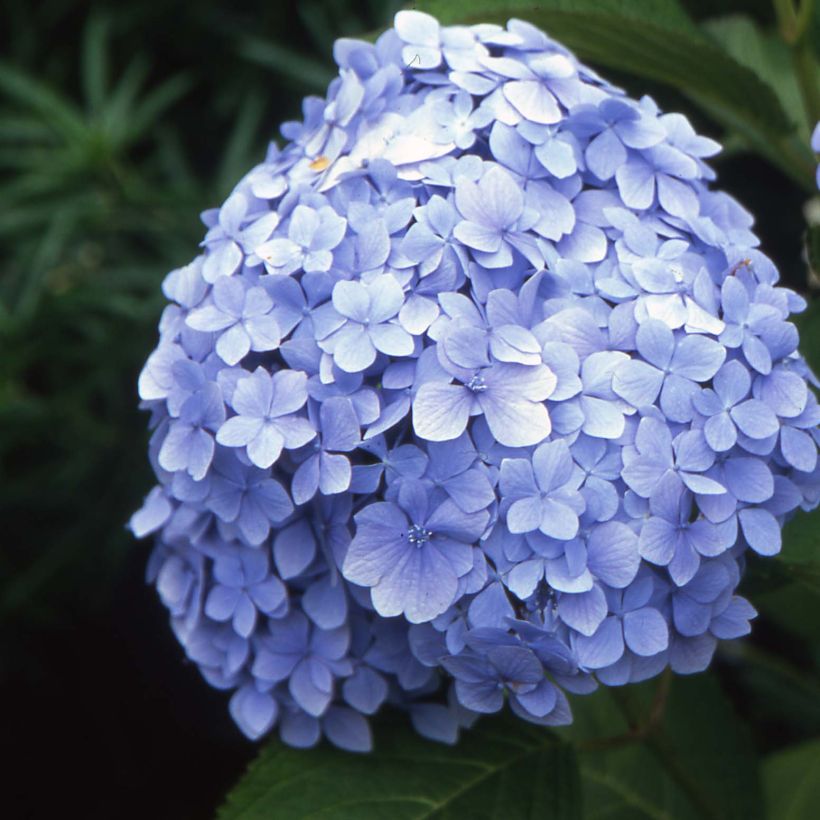

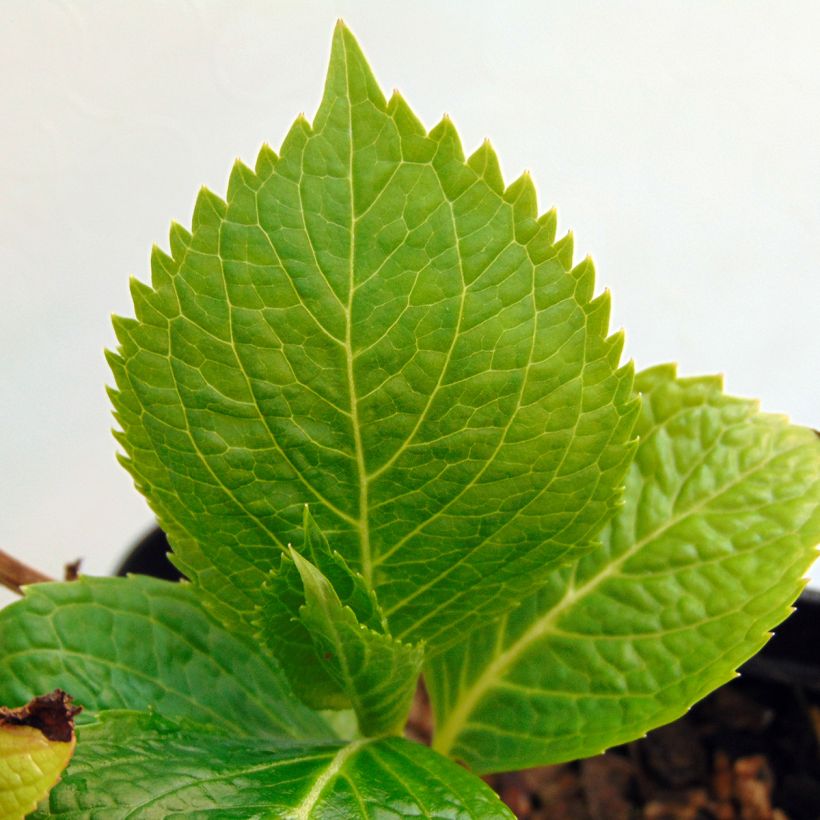

Plant habit
Flowering
Foliage
Botanical data
Hydrangea
macrophylla
Mousseline
Hydrangeaceae
Bigleaf Hydrangea, French Hydrangea
Cultivar or hybrid
Other Hydrangea Macrophylla
Planting and care
Plant the Hydrangea macrophylla Mousseline in spring or early autumn, preferably in a semi-shaded position, for example against an east-facing wall, or even north-facing in a warm climate. In very cold areas, it would be wise to overwinter it in a cold greenhouse or conservatory. Keep it protected from cold, drying winds. It does not require ericaceous soil, but appreciates a deep, moist, well-drained, and fairly fertile soil, possibly enriched with a good base fertiliser before planting. If the soil is dry at the base of the wall, place the root ball at least 30-40 cm (11.8 - 15.7 in) away from the base of the wall and incorporate a quantity of well-rotted compost to better retain moisture in the soil. It is perfectly hardy in average climates. As for pruning, remove faded flowers on the first bud or on the pair of buds directly below. Cut back to the base by a quarter or a third the older stems when the plant is mature to encourage the formation of new shoots. Carry out this pruning every year during the months of March and April.
Planting period
Intended location
Care
This item has not been reviewed yet - be the first to leave a review about it.
Summer-flowering shrubs
Haven't found what you were looking for?
Hardiness is the lowest winter temperature a plant can endure without suffering serious damage or even dying. However, hardiness is affected by location (a sheltered area, such as a patio), protection (winter cover) and soil type (hardiness is improved by well-drained soil).

Photo Sharing Terms & Conditions
In order to encourage gardeners to interact and share their experiences, Promesse de fleurs offers various media enabling content to be uploaded onto its Site - in particular via the ‘Photo sharing’ module.
The User agrees to refrain from:
- Posting any content that is illegal, prejudicial, insulting, racist, inciteful to hatred, revisionist, contrary to public decency, that infringes on privacy or on the privacy rights of third parties, in particular the publicity rights of persons and goods, intellectual property rights, or the right to privacy.
- Submitting content on behalf of a third party;
- Impersonate the identity of a third party and/or publish any personal information about a third party;
In general, the User undertakes to refrain from any unethical behaviour.
All Content (in particular text, comments, files, images, photos, videos, creative works, etc.), which may be subject to property or intellectual property rights, image or other private rights, shall remain the property of the User, subject to the limited rights granted by the terms of the licence granted by Promesse de fleurs as stated below. Users are at liberty to publish or not to publish such Content on the Site, notably via the ‘Photo Sharing’ facility, and accept that this Content shall be made public and freely accessible, notably on the Internet.
Users further acknowledge, undertake to have ,and guarantee that they hold all necessary rights and permissions to publish such material on the Site, in particular with regard to the legislation in force pertaining to any privacy, property, intellectual property, image, or contractual rights, or rights of any other nature. By publishing such Content on the Site, Users acknowledge accepting full liability as publishers of the Content within the meaning of the law, and grant Promesse de fleurs, free of charge, an inclusive, worldwide licence for the said Content for the entire duration of its publication, including all reproduction, representation, up/downloading, displaying, performing, transmission, and storage rights.
Users also grant permission for their name to be linked to the Content and accept that this link may not always be made available.
By engaging in posting material, Users consent to their Content becoming automatically accessible on the Internet, in particular on other sites and/or blogs and/or web pages of the Promesse de fleurs site, including in particular social pages and the Promesse de fleurs catalogue.
Users may secure the removal of entrusted content free of charge by issuing a simple request via our contact form.
The flowering period indicated on our website applies to countries and regions located in USDA zone 8 (France, the United Kingdom, Ireland, the Netherlands, etc.)
It will vary according to where you live:
- In zones 9 to 10 (Italy, Spain, Greece, etc.), flowering will occur about 2 to 4 weeks earlier.
- In zones 6 to 7 (Germany, Poland, Slovenia, and lower mountainous regions), flowering will be delayed by 2 to 3 weeks.
- In zone 5 (Central Europe, Scandinavia), blooming will be delayed by 3 to 5 weeks.
In temperate climates, pruning of spring-flowering shrubs (forsythia, spireas, etc.) should be done just after flowering.
Pruning of summer-flowering shrubs (Indian Lilac, Perovskia, etc.) can be done in winter or spring.
In cold regions as well as with frost-sensitive plants, avoid pruning too early when severe frosts may still occur.
The planting period indicated on our website applies to countries and regions located in USDA zone 8 (France, United Kingdom, Ireland, Netherlands).
It will vary according to where you live:
- In Mediterranean zones (Marseille, Madrid, Milan, etc.), autumn and winter are the best planting periods.
- In continental zones (Strasbourg, Munich, Vienna, etc.), delay planting by 2 to 3 weeks in spring and bring it forward by 2 to 4 weeks in autumn.
- In mountainous regions (the Alps, Pyrenees, Carpathians, etc.), it is best to plant in late spring (May-June) or late summer (August-September).
The harvesting period indicated on our website applies to countries and regions in USDA zone 8 (France, England, Ireland, the Netherlands).
In colder areas (Scandinavia, Poland, Austria...) fruit and vegetable harvests are likely to be delayed by 3-4 weeks.
In warmer areas (Italy, Spain, Greece, etc.), harvesting will probably take place earlier, depending on weather conditions.
The sowing periods indicated on our website apply to countries and regions within USDA Zone 8 (France, UK, Ireland, Netherlands).
In colder areas (Scandinavia, Poland, Austria...), delay any outdoor sowing by 3-4 weeks, or sow under glass.
In warmer climes (Italy, Spain, Greece, etc.), bring outdoor sowing forward by a few weeks.

































